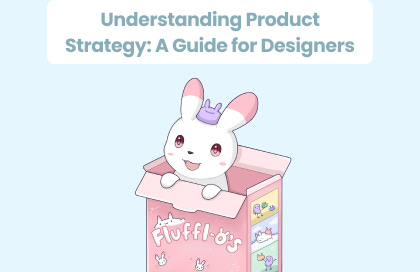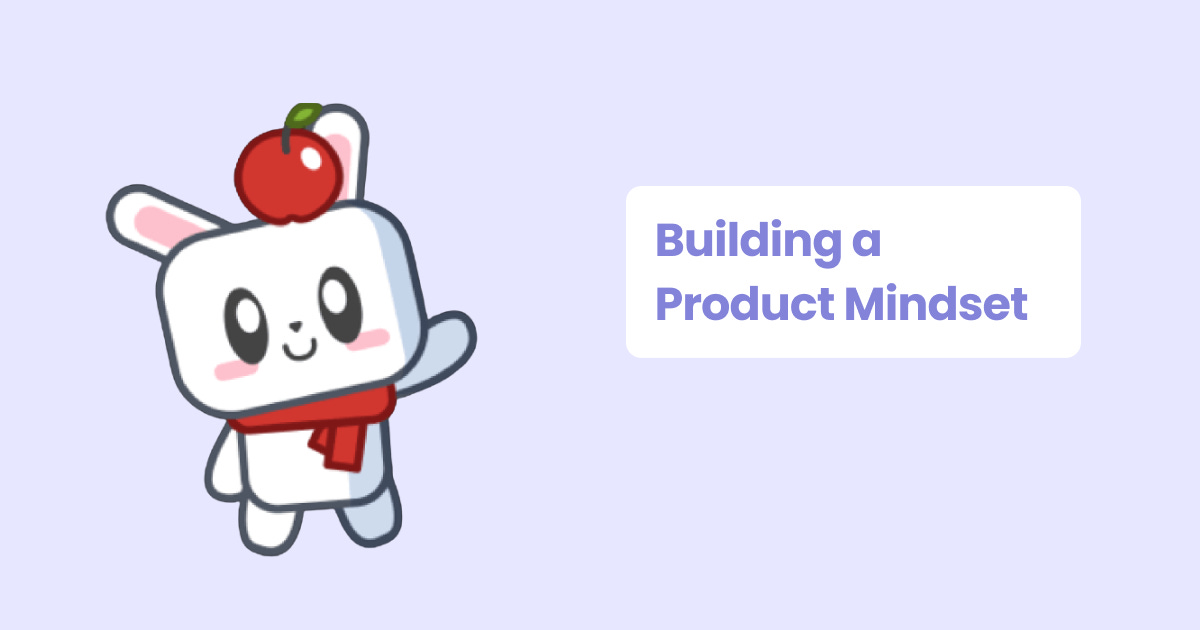To create products people want and need, you have to understand product strategy. That means going beyond flows and wireframes to the bigger picture of solving real customer problems.
In this guide, we'll break down the key principles of product thinking and show you how to apply them in your work. You'll learn how to align your design decisions with business objectives, collaborate with stakeholders, and shape product direction.
What Is Product Thinking?
Product thinking is applying a product-focused mindset to your UX design work. Rather than just designing individual features or interfaces, you start thinking about the product as a whole and how to strategically improve the overall user experience.
User-Centered Focus
The key to product thinking is keeping the user at the center of your decisions. You need to develop a deep understanding of your users and what they need and want. Then you can determine how to best meet those needs through your product's design and functionality.
Strategic Solutions
With a product mindset, you seek strategic solutions, not just tactical fixes. You ask how you can improve the end-to-end experience, not just redesign a single page. You define a vision for where the product should go and determine a roadmap to get there.
Continuous Iteration
Product thinking also means continuously improving and optimizing the product. You regularly re-evaluate how well the product is meeting user needs and expectations.
Collaboration is Key
Work with product managers to understand key business goals and metrics. Partner with researchers to conduct user studies and analyze findings. Brainstorm with engineers and designers to explore new ideas.
Aligning Design Solutions With Product Strategy
As a designer, your role is to solve problems and improve experiences. But to do that effectively, you need to understand the product strategy set by your company or client.
What problems are they trying to solve? Who are they trying to help? What goals are they working to achieve?
User needs
The people you're designing for should be at the heart of any product strategy. Make sure you understand exactly what needs and pain points they have that the product is aiming to address.
Business goals
Ensure you understand what key performance indicators the product is meant to impact. Design solutions that will directly support meeting those goals.
Our friend, Femke, is also launching her new cohort for her course, Advocate for your ideas, influence product and step up your design career (4 weeks) and we have a special discount for you! It runs July 1-26 and enrollment ends June 17.
Gain the skills needed to have strategic influence and build strong partnerships. You have great ideas, but you're not sure how to present them to your team. You're overlooked, brushed aside, dismissed, or even talked over by PM's. You want to level up, but are aware that you need to gain confidence in your ideas in order to do so. With Femke’s product design strategy course, you will learn to make sense of ambiguous product challenges, make design decisions based in strong rationale, and ultimately influence product roadmaps all while bringing more value to your team.
Get 15% off the regular course: DB15
Using Data to Inform Product Decisions
As a UX designer, data is one of your most useful tools for understanding how to improve your product. Metrics like clickthrough rates, conversion rates, and customer satisfaction scores provide insight into what’s working and what needs refinement.
Behavioral data
Looking at how people actually engage with your product in the real world is invaluable. For example, if you see a key user flow or feature has a low completion rate, that points to an opportunity for improvement. Dive into the “why” by analyzing things like:
Where are people exiting the flow?
How long are they spending on each step?
Are error messages appearing frequently?
Don’t assume you know the reasons for the data—ask users directly. Send out surveys or conduct interviews to better understand their perspectives.
Testing new ideas
Use data to determine which ideas to test and refine. If you have multiple concepts for how to improve a user flow, look at metrics for that part of the product to identify which areas need the most help. Then devise tests for your various solutions to see which drives the most significant improvements.
For example, if you want to increase signups, create three alternative versions of that page and A/B test them to determine a winner. The data from the test will demonstrate which variation resonates most with your audience so you can make that the new default experience. Continually testing and optimizing in this way, based on a data-driven approach, will help you build a product that fully meets the needs of your users.
Collaboration Between Designers and Product Managers
To create products that truly meet user needs and achieve business goals, close collaboration between designers and product managers is essential.
Share User Research Insights
Share these findings with your product managers so you’re both on the same page about user needs. Discuss how designs and features could address insights from research to build a shared vision.
Align on Key Metrics
Product managers determine key performance indicators (KPIs) to measure success. Meet with them to understand metrics like conversion rates, retention, and customer satisfaction. Then, evaluate how your designs might impact those metrics and make adjustments to better achieve targets.
Define the Product Roadmap Together
The product roadmap outlines the vision and direction for a product over time. Work closely with product managers to define priorities and determine what features or improvements to focus on in both the short and long term.
Review Designs and Prototypes
Share designs, wireframes, and interactive prototypes with your product managers to get feedback and make sure you’re headed in the right direction. Building a collaborative partnership with your product managers leads to better outcomes for both users and the business.
Building a Product Mindset
Understand your product’s vision and business goals
Ask questions about the target users, key features, and main value propositions.
Focus on the end-to-end experience
Don’t just focus on individual features or touchpoints. Consider how all the parts come together to create a cohesive experience. Map out the major user flows and interactions across devices and channels. Look for gaps or areas of friction in the overall experience that you can help improve.
Develop product thinking
Learn to think about the product life cycle, evolution, and roadmap. Anticipate how new features or functionality may impact existing parts of the experience. Consider how you can design components or systems to be flexible and scalable.
Collaborate with other product teams
Work closely with other product teams like product management, marketing, and engineering. Collaborate on user research, discuss key insights, and get input on your design concepts. Share your UX findings and recommendations to help shape the overall product roadmap.
Conclusion
Understanding product strategy will make you a stronger designer. By learning to think like a product manager, you'll be able to bring more value to your team. You'll be able to communicate and collaborate with stakeholders more effectively. With the right mindset and a continuous learning approach, you can become the well-rounded designer that every organization needs.
🎉 Events
Also, see you at CONFIG! We have lots more in-person events coming your way in San Francisco. We’ll be bringing more online events late June and July!
Designer & Founder meetup with Design Buddies & ADPList (Mon Jun 10, 5:30 pm)
Midsummer AI's Dream: GenAI Design Panel + Mixer with IDEO, IEEE, Glyf, and Design Buddies (Thu Jun 13, 5:00 pm)
Pre-Config Designer Meetup with STUDIO and Design Buddies (Fri Jun 21, 5:00 pm)
Get Configgy with it at Bunny House with Product Disrupt and Design Buddies (Mon Jun 24, 5:30 pm)
Detatch Event: The Unofficial Config After Party with Designer Tom, Jesse Showater, MDS, and Grace Ling (Thu Jun 27, 7:00 pm)
🐰 About Design Buddies
Design Buddies is a community where you level up your design career. Land jobs, improve your design skills, and make friends. We have resources, events, design challenges, job boards, fun perks, and more. Founded by Grace Ling
👋 Visit our website, hop into our community, and subscribe to our newsletter!
💖 Partner with us
🪄 Sign up for FluffleAI waitlist for your personalized career roadmap
🌟 Watch our past events and connect with us on Instagram, Twitter, and LinkedIn for more fun!











I wonder where you have worked that designers are not user-centered focused (of your points...that one especially), not (at least desiring to) participate in strategic solutions, not wanting to improve the end-to-end experience, not advocating for continuous iteration, not collaborating... That is all standard design work.
Generally could only hope to get product management to engage in these activities...